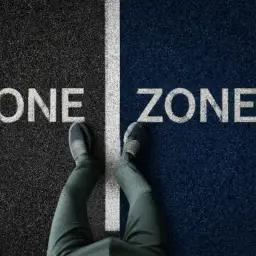Are you someone who is constantly looking for ways to improve yourself and achieve your goals? Have you come across the concept of grit and its associated literature in your quest for self-improvement? Grit, the idea of perseverance and passion for long-term goals, has gained popularity in recent years as a key factor in success. However, before you dive into the world of grit literature, it’s important to understand the benefits, limitations, and potential misinterpretations associated with it.
In this article, we will provide an honest review of grit literature and its impact on personal growth and success. We will explore the benefits of grit literature, such as motivation and inspiration, as well as its limitations, such as the potential for burnout and a narrow focus on individual achievement. Additionally, we will discuss potential misinterpretations of grit, including the idea that success is solely based on individual effort and the dismissal of systemic barriers.
By the end of this article, you will have a better understanding of the science behind grit and whether or not it’s the right approach for you.
Key Takeaways
- Grit literature has gained popularity in recent years as a key factor in success, but it has limitations such as overemphasizing individual effort and ignoring systemic barriers.
- Cultivating grit involves a complex combination of passion, perseverance, and goal orientation, and it is a dynamic construct that can be developed and improved over time.
- Access to resources and opportunities is important in achieving success, and ignoring systemic barriers can perpetuate harmful narratives, so it’s important to acknowledge and address systemic inequalities.
- Understanding the science behind grit can help in applying its principles and reaping its benefits, which include motivation, inspiration, resilience, and growth mindset.
What is Grit Literature?
So, what’s the deal with grit literature? It’s the latest buzzword in the self-help world, promising to transform your life by harnessing the power of perseverance and passion.
But what exactly is grit literature? In simple terms, it refers to the body of literature that focuses on the idea that success is not just determined by talent and intelligence, but also by the ability to work hard and persist in the face of challenges.
The popularity of grit literature can be attributed to its promise of providing a roadmap for achieving success, regardless of one’s background or natural abilities. It has gained a following among individuals who feel that they are capable of achieving great things, but are unsure of how to go about it.
However, it’s important to note that grit literature is not a magic bullet for success. It’s merely one of the many tools available to individuals who wish to achieve their goals.
The Benefits of Grit Literature
You’ll love discovering the advantages of reading about grit. It can boost your motivation and resilience. Developing resilience and cultivating perseverance are two of the key benefits that you can gain from reading about grit. When you read about individuals who have overcome great obstacles to achieve their goals, you’ll find yourself inspired to keep going even when the going gets tough.
In addition, reading about grit can help you to cultivate a growth mindset. Instead of giving up when faced with challenges, you’ll learn to see them as opportunities for growth and development. This can help you to overcome obstacles more easily and to maintain a positive outlook even in the face of adversity.
So if you’re looking to boost your motivation and resilience, reading about grit is definitely worth your time and effort.
The Limitations of Grit Literature
When it comes to grit literature, it’s important to be aware of its limitations.
One major issue is the overemphasis on individual effort, which can lead to the belief that success or failure is solely the result of one’s character or work ethic.
Another limitation is the tendency to ignore systemic barriers, such as inequality or discrimination, that can prevent individuals from achieving their goals.
Finally, grit literature often simplifies complex issues, such as poverty or mental health, which can lead to a lack of understanding and empathy towards those facing these challenges.
Overemphasis on Individual Effort
Don’t fall into the trap of believing that grit is solely about individual effort and that success is solely determined by hard work. While individual effort is important in achieving success, grit literature often overlooks the role of community support and opportunities in one’s success.
A sole focus on individual effort ignores the systemic barriers and inequalities that exist in society, which can impede one’s ability to succeed. It’s important to recognize that motivation alone may not be enough to achieve success.
It’s equally important to have access to opportunities that allow individuals to put their grit and hard work into action. Without access to resources and opportunities, even the most motivated individuals may struggle to achieve their goals.
So while grit and hard work are important factors in achieving success, it’s important to also consider the role of community and the need for equal access to opportunities.
Ignoring Systemic Barriers
Ignoring systemic barriers in discussions about grit can lead to a narrow understanding of the factors that contribute to an individual’s success. While it’s important to recognize the role of individual effort and determination, it’s equally important to acknowledge the impact of societal inequalities and systemic barriers that exist in our society.
Factors such as race, gender, socioeconomic status, and access to resources can significantly impact an individual’s ability to succeed, regardless of how much grit they possess. When we solely focus on individual effort and ignore systemic barriers, we risk placing the blame on those who face such barriers.
This can perpetuate harmful narratives that individuals who do not succeed simply lack the necessary grit or determination. It’s crucial to acknowledge and address systemic barriers in order to create a more equitable society where everyone has the opportunity to succeed, regardless of their background or circumstances.
Simplifying Complex Issues
You might oversimplify complex issues when discussing grit, missing important nuances and factors that contribute to success. Breaking down and simplifying complex issues isn’t necessarily a bad thing, but it can become problematic when important details are left out.
For example, when discussing the concept of grit, it’s often simplified to just mean perseverance or resilience. However, grit is actually a complex combination of passion, perseverance, and goal orientation. By oversimplifying grit, we miss the nuances of what actually makes someone successful.
Navigating ambiguity is another example of a complex issue that can be oversimplified. It’s often said that successful people are good at navigating ambiguity, but what does that actually mean? It involves being able to handle uncertainty and unknowns, being adaptable, and being able to make decisions with incomplete information. However, simply stating that someone is good at navigating ambiguity doesn’t capture the complexity of the skill. It takes more than just being able to handle uncertainty to succeed in ambiguous situations.
By oversimplifying these complex issues, we miss the important details that contribute to success.
Potential Misinterpretations of Grit Literature
However, it’s important to note that grit literature can be misinterpreted in various ways. Misconceptions about grit can arise when people oversimplify the concept, disregarding its complexity and overlooking the critical analysis needed to truly understand it.
For instance, some people interpret grit as a trait that is either present or absent in individuals, leading them to believe that some people are simply born with more grit than others. This oversimplification disregards the fact that grit is a dynamic construct that can be developed and improved over time through deliberate practice and perseverance.
Another misinterpretation of grit literature is the assumption that grit is the sole determinant of success. While having grit can certainly help individuals achieve their goals, it is not the only factor involved in success. Other factors such as opportunity, privilege, and mental and physical health can also play a significant role.
It’s important to acknowledge that grit can be a powerful tool, but it’s not a panacea for success and should not be used as a justification for ignoring systemic inequalities that prevent some individuals from achieving their goals.
The Science Behind Grit
Now that you’re aware of the potential misinterpretations of grit literature, let’s delve deeper into the science behind it. Understanding this science can help you better apply its principles and reap its benefits.
The science behind grit is based on the concept of neuroplasticity. Neuroplasticity is the brain’s ability to change and adapt in response to experiences and learning. Grit is not a fixed trait, but rather a skill that can be developed through intentional practice and perseverance.
Here are three key points to keep in mind when exploring the science behind grit:
-
Grit involves the development of new neural pathways in the brain through intentional practice and perseverance.
-
The brain is capable of changing throughout our lives, and cultivating grit can lead to increased neuroplasticity.
-
Grit is not solely dependent on innate talent or ability, but rather on a growth mindset and a willingness to learn and improve over time.
By understanding the science behind grit and its connection to neuroplasticity, you can begin to develop your own grit and resilience, and apply it to achieve your goals and overcome obstacles.
Is Grit Literature Right for You?
Are you considering incorporating grit into your personal development journey? It’s important to assess your goals and needs to determine if grit is the right strategy for you.
Additionally, it’s important to find balance with other self-improvement strategies and incorporate grit as a complementary tool in your personal growth plan. Take the time to evaluate your options and determine the best path forward for your individual needs.
Assessing Your Goals and Needs
Ready to determine what you truly want and need? Assessing your goals and needs is key to developing grit and achieving success.
Begin by assessing priorities, which involves identifying what’s most important in your life and what you value the most. This will help you determine the direction you want your life to take and what goals you need to set.
When setting goals, it’s important to be realistic. Unrealistic goals can lead to frustration and disappointment, which can derail your efforts to develop grit.
Break down larger goals into smaller, achievable steps and track your progress along the way. This will help you stay motivated and make adjustments as needed.
Remember that developing grit is a process, and success is not always linear. With the right goals and mindset, you can achieve the success you desire.
Finding Balance with Other Self-Improvement Strategies
Struggling to balance your self-improvement strategies? Incorporating other techniques alongside grit can help you find the harmony you need to achieve success. While grit can be a powerful tool in pursuing your goals, it’s important to remember that it’s just one piece of the puzzle.
Here are a few ideas for combining grit with other strategies to help you find balance:
-
Mindfulness: Incorporating mindfulness practices such as meditation or deep breathing can help you stay present and calm, reducing stress and anxiety that can interfere with your ability to stay focused on your goals.
-
Social Support: Having a supportive network of friends, family, or peers can provide motivation, encouragement, and accountability as you work towards your goals. Consider joining a group or finding a mentor who can offer guidance and support.
-
Self-Care: Taking care of your physical and emotional health is essential for maintaining the energy and resilience you need to pursue your goals. Make sure you’re getting enough sleep, eating well, and taking time for activities that bring you joy and relaxation.
By combining strategies and finding harmony, you can create a well-rounded approach to achieving your goals that supports your overall well-being and long-term success.
Incorporating Grit into Your Personal Growth Plan
Incorporate grit into your personal growth plan by setting goals, staying focused, and persevering through challenges. Developing perseverance is the key to achieving long-term success. Start small by setting achievable goals that push you out of your comfort zone. Once you achieve those goals, set higher ones that require more effort and determination. This will help you cultivate resilience and develop the ability to bounce back from setbacks.
To incorporate grit into your personal growth plan, it’s important to stay focused on your goals. Avoid distractions and prioritize your time to ensure that you’re making progress towards your objectives. When faced with challenges, persevere through them by maintaining a positive attitude and finding creative solutions. Remember, setbacks are part of the process, and they provide valuable opportunities for growth and learning. By incorporating grit into your personal growth plan, you’ll develop the perseverance and resilience necessary to achieve your goals and overcome any obstacles that come your way.
| Goal Setting | Staying Focused | Perseverance |
|---|---|---|
| Set achievable goals that push you out of your comfort zone | Avoid distractions and prioritize your time to ensure progress | Maintain a positive attitude and find creative solutions |
| Set higher goals that require more effort and determination | Create a routine or schedule to help you stay on track | Embrace setbacks as opportunities for growth and learning |
| Break down larger goals into smaller, manageable steps | Hold yourself accountable for your progress | Keep your eye on the end goal and never give up |
| Celebrate your successes along the way | Stay motivated by reminding yourself of your why | Surround yourself with a supportive community |
| Reflect on your progress and adjust your goals as needed | Practice self-care to avoid burnout | Learn from your mistakes and use them as motivation to keep going |
Frequently Asked Questions
How does reading grit literature compare to other methods of developing grit?
If you’re looking to develop grit, reading grit literature is one way to do it, but it’s not the only way. The pros of reading grit literature include gaining insight into the experiences of others who have developed grit, and learning strategies for building resilience and perseverance.
However, there are also cons to this approach, such as the risk of misinterpreting the message or becoming overly focused on achieving success at all costs. Effectiveness of reading grit literature ultimately depends on the individual, as some may find it motivating while others may find it discouraging.
When comparing it to other methods of developing grit, such as deliberate practice or seeking out challenging experiences, reading grit literature may be less effective as it lacks the element of actively practicing and applying grit in real-life situations.
Can grit literature be beneficial for individuals who already display high levels of grit?
If you already display high levels of grit, reading grit literature can still be beneficial for you.
Exploring grit’s impact on mental health can give you a deeper understanding of how grit can affect your well-being.
Additionally, sharing grit literature with children can be a great way to help them develop grit from a young age.
While grit literature may not be the only method for developing grit, it can be a helpful tool in your personal growth journey.
Are there any negative side effects associated with reading grit literature?
Reading grit literature may have potential drawbacks that could affect you psychologically. While the literature may inspire and motivate you to persevere through tough times, it could also create unrealistic expectations and lead to feelings of inadequacy if you’re unable to achieve the level of grit presented.
Additionally, constantly being exposed to the idea of grit may cause you to overlook the importance of rest and self-care, leading to burnout and decreased mental health. It’s important to approach grit literature with a critical eye and recognize that grit isn’t the only factor in achieving success.
Balancing grit with self-care and realistic expectations can lead to a healthier and more sustainable approach to achieving your goals.
How can grit literature be incorporated into a comprehensive personal development plan?
To integrate grit literature into a comprehensive personal development plan, start by identifying specific areas where you want to improve and develop grit.
Then, select strategies from grit literature that align with your goals and incorporate them into your daily habits and routines. It’s important to keep in mind the long term sustainability of these strategies and make adjustments as needed.
Remember that grit is not the only factor in success and personal development, so be sure to balance your approach with other important areas of growth such as emotional intelligence, self-care, and social connection.
Is there a recommended order or sequence for reading different grit literature resources?
When it comes to reading different grit literature resources, there’s no recommended order or sequence. However, it may be helpful to start with foundational works, such as Angela Duckworth’s book ‘Grit: The Power of Passion and Perseverance’.
Before moving on to more specific topics like grit in education or sports, it’s important to compare the concepts discussed in the literature to your own experiences. Putting them into practice in your personal development plan is crucial.
Remember that reading about grit is just the first step. It’s up to you to apply these principles and work towards your goals.
Conclusion
So, is grit literature right for you? Well, that depends on what you’re looking for. If you’re seeking motivation and inspiration to push through challenges and achieve your goals, then grit literature can certainly provide that.
However, it’s important to approach this type of literature with a critical eye and an understanding of its limitations. While grit literature can be helpful in many ways, it’s not a one-size-fits-all solution.
It’s important to remember that everyone’s journey is different, and what works for one person may not work for another. Ultimately, the key to success is finding a balance between persistence and adaptability, and using a variety of tools and strategies to achieve your goals.
So, if you’re interested in exploring grit literature, go ahead and give it a try—but be sure to keep an open mind and use it as just one piece of your overall toolkit for success.










































































































